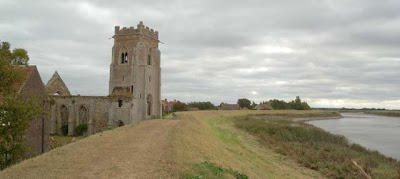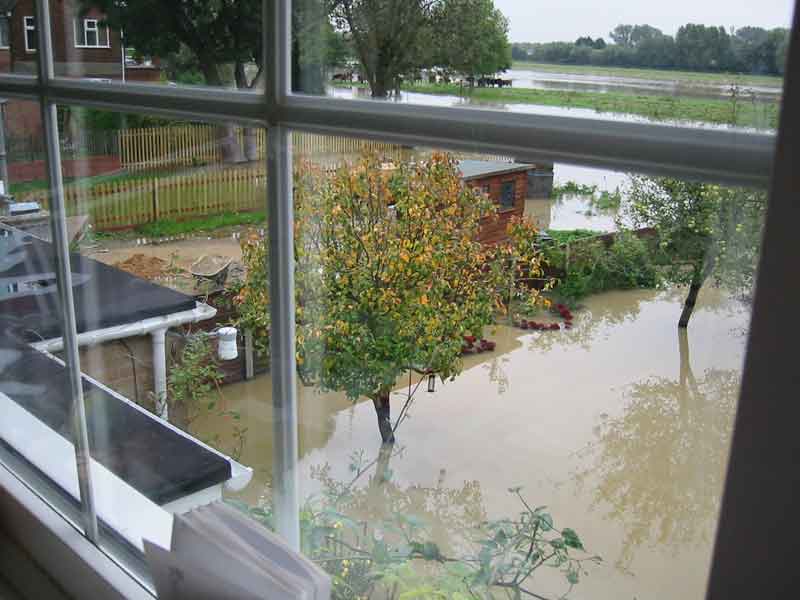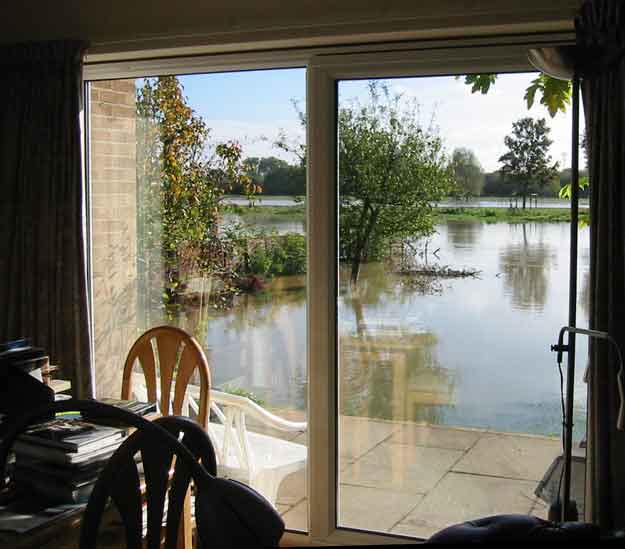I knew it in theory before; but there’s knowing and then there’s knowing.
I started walking, alone, from my own front door, at about 2pm on the last Saturday of September. I didn’t have time really but it was the last good chance of the year, with the weather set fair and dry and no work deadlines that couldn’t be made to wait. I’d spent the morning on my most pressing errands and chores, and then I sent out a brief announcement to some people who might want to come with me, but really not giving them enough notice, which was sort of intentional. Best to set off alone.
The first day’s route was familiar. I’d walked this way before, and boated along it many times. No surprises, just best-foot-forward. I was excited by the plan, and racing the sun, and I made good progress. From home to Clayhithe along the west bank; across the bridge and following the east bank via Upware to the next bridge; across again to Dimmock’s Cote.
Sunset overtook me at Pope’s Corner, and I paused on the bridge to watch it and to wonder what was going to happen next. But luck was with me, and there was half a moon, and the path was straight and level along the top of the floodbank. I strode into Ely railway station at about 8pm. Andrew met me at Cambridge and took me out to dinner. Nice.
Day 2 suffered a bit from a slow start. I was stiffer than I’d expected to be, and took a bath to remedy it. And then the usual faffing-around with email and what-have-you. Train, eventually, back to Ely, where William joined me. He, an efficient blogger, has already documented the weirdly convoluted goose-chase we were sent on by the Fen Rivers Way Association’s booklet. We would have done better following the OS map, which tells you to keep close to the river, even though this means walking along a road for part of the way.
We rejoined the river at Queen Adelaide bridge, and here I finally managed to pick up the rhythm of the previous day, and get into some kind of a stride again. River straight as a ruler; strong sun (glad of my hat). But the lack of pace in the early part of the morning meant that we reached Littleport after Andrew had, and then I needed a rest and some sustenance at the Black Horse, so it was 3pm before he and I bid farewell to William.
Then I set off with Andrew—and immediately made a strategic navigational error. I’d left the OS map for this section on the boat, and failed to buy another copy that morning, and so I was relying on the Fen Rivers Way Association’s 1998 booklet, which told us to cross the river to the east bank. This didn’t work out well. The floodbank is mostly unwalkable, and the A10 is ferocious. Never doing that again. (Subsequent research shows that this section of the official path has been moved to the west bank.)
Once we reached the county boundary, though, things got better. Norfolk looks after its walkers, even if they aren’t on an official long-distance path. And just before the boundary there is the Ship Inn, where the Brandon Creek meets the Ouse, and it is Cambridgeshire CAMRA’s Pub of the Year, and very nice too. Though we only troubled it for a cup of tea on this occasion.
Onwards, fortified by tea. Floodbank now well maintained and walking good. Dusk approaching, though. Eventually the bridge: Ten Mile Bank. Or was it? We were utterly flummoxed. Nothing was as described in the booklet—bridge different, and no trace of the pub—not even its foundations! No shop, no nothing. Well, we crossed anyway to the west bank, where we knew we wanted to be, and shortly afterwards passed St Mark’s Church, the one thing in Ten Mile Bank that seemed to answer to its description in the book. So this probably was Ten Mile Bank, or at least some weird parallel-universe approximation to it.
There was nothing in the village to detain us, so we set off north again. From here to Denver the path follows a minor road, so it didn’t much matter that it was getting dark again. But when we reached the Jenyns Arms I’d had enough. Spurned their food (we’ve tried it before); sat over a drink or two while a taxi came out from Downham Market for us. To the station; to Cambridge; to our usual Sunday-evening takeaway with the usual friends—rather later than usual, though. Web search: discovered the truth about Ten Mile Bank!
Monday morning started with the now-familiar flurry of chores, email, getting ready and just-getting-a-few-things-done-first. And a mad dash into Cambridge to buy a new OS map—not making the same mistake twice. Which resulted in my just missing, at Waterbeach, the train that Shona had caught in Cambridge. So I drove to Downham Market. The train is a lot quicker! It was well after midday when she and I eventually set forth from Downham Market station car-park. Never mind; short day, today.
The first job was to get back to the previous day’s endpoint, the Jenyns Arms. We accomplished this by walking along the Relief Channel, a route I knew already from an earlier boat-related adventure. There were cows, but they were not hostile. After a brief survey of the Denver Complex and its tourist information boards, and a pause, seated on the floodbank across the road from the Jenyns Arms, to consume our M&S sandwiches, we doubled back along the eastern bank of the Great Ouse itself, walking along what is, effectively, a very long narrow island between the river and the Relief Channel. The turf under our feet was close-cropped by sheep, and springy—if it hadn’t been for the thistles, I’d have tried walking barefoot. There were cormorants. We saw a narrowboat waiting outside Salter’s Lode, presumably for the tide (had they been there all night on the mudbank?—the tide was approaching the top as we passed them). In the distance, a long way ahead of us, a huge, white and mysterious building loomed [to be explained in a footnote later]. We admired the flour mill at Downham Market from all angles, and the trim little houses behind the floodbank—the countryside is all very well, but human things have a special fascination.

Downham Market flour mill
I don’t think I’ve ever done a significant walk with another woman before. Alone, yes. In big mixed groups, yes. With a man, yes. The odd thing was to be walking with a companion who had a shorter stride than my own. I’m accustomed to lengthening my stride to keep in step.
We reached Stowbridge by about 4. Pub present and correct, but, sadly, closed on Monday afternoons. Never mind. Wiggenhall St Mary Magdalen wasn’t a great deal further on, and its pub was open. From there, after a rest, to Watlington station (less than a mile by road), and thus to Downham Market again (which felt like a buzzing metropolis after the emptiness of the fens), where we collected the car and drove home. A pleasant, companionable day.
I took the Tuesday off from walking, to catch up on things that couldn’t be made to wait any longer.
Wednesday morning: preparations accompanied by a flutter of excitement. Today might finish it! Taped up my poor toes with Elastoplast Extreme, William’s parting gift from Sunday. Packed sandwiches for a long haul. Resumed walking (alone) at Watlington station, by first backtracking to Wiggenhall St Mary Magdalen and there ascending the floodbank once again. Glad to be on my own today, so that I could without embarrassment let my battered feet dictate the pace. At Wiggenhall St Peter I found to my astonishment that the ruined church nestles just behind the floodbank. I’d visited it before from the road and never understood this. You can’t now, of course, climb the tower, but the view from it must have been splendid. At Wiggenhall St Germans there was a pub, and I had soup and a pickled egg, and carried on. Crossing the Tail Sluice felt like a significant step, so I sent a triumphant tweet from the top, and my husband phoned to congratulate me. Solitude is not what it used to be.
 I entered King’s Lynn just as school was turning out for the day, and it felt weird to be among people again—kids, mums, bikes. Now what? Fantasies of afternoon tea gave way to the reality of the ferry schedule—last boat back at 6pm, and an extra three miles round by the bridge if you miss it. Tea could wait; the unknown beckoned, though my feet weren’t entirely happy about it.
I entered King’s Lynn just as school was turning out for the day, and it felt weird to be among people again—kids, mums, bikes. Now what? Fantasies of afternoon tea gave way to the reality of the ferry schedule—last boat back at 6pm, and an extra three miles round by the bridge if you miss it. Tea could wait; the unknown beckoned, though my feet weren’t entirely happy about it.
 So I followed the channel downstream out of West Lynn. First past the docks, the river busy now with proper, serious shipping, putting to sea on the turning tide. I decided to go on for an hour and then think about what to do next, while there was still time to get back for the ferry. But an hour brought me to a smelly and unattractive stretch next to the sewage works, and I thought, no, this can’t be the end of it. Something will turn up. So I went on. And so it was that, as the sun was slowly sinking, I found myself in a perfectly, wonderfully desolate spot, and finally I could (more or less) look out at what just about qualified to be described as the sea. And I was happy, and it was done. And now all I had to do was to get back to civilization.
So I followed the channel downstream out of West Lynn. First past the docks, the river busy now with proper, serious shipping, putting to sea on the turning tide. I decided to go on for an hour and then think about what to do next, while there was still time to get back for the ferry. But an hour brought me to a smelly and unattractive stretch next to the sewage works, and I thought, no, this can’t be the end of it. Something will turn up. So I went on. And so it was that, as the sun was slowly sinking, I found myself in a perfectly, wonderfully desolate spot, and finally I could (more or less) look out at what just about qualified to be described as the sea. And I was happy, and it was done. And now all I had to do was to get back to civilization.
 Which turned out to be incredibly easy. I didn’t deserve to be so lucky, but that’s the story of my life in a lot of ways, and at least I don’t take it for granted. Well, not all the time, anyway. I turned inland, and there was a farm, and the farmer said “Are you lost?”, so I explained, and he drove me to the village (Clenchwarton) in his Land Rover. Very kind. He clearly thought I was mad when I told him what I’d done, but we parted friends. And then I found a bus stop, and I was just typing the magic code into my phone to get bus information when a taxi drove past! Here, in the middle of nowhere. And I waved, and it stopped, and yes, it could take me to King’s Lynn railway station.
Which turned out to be incredibly easy. I didn’t deserve to be so lucky, but that’s the story of my life in a lot of ways, and at least I don’t take it for granted. Well, not all the time, anyway. I turned inland, and there was a farm, and the farmer said “Are you lost?”, so I explained, and he drove me to the village (Clenchwarton) in his Land Rover. Very kind. He clearly thought I was mad when I told him what I’d done, but we parted friends. And then I found a bus stop, and I was just typing the magic code into my phone to get bus information when a taxi drove past! Here, in the middle of nowhere. And I waved, and it stopped, and yes, it could take me to King’s Lynn railway station.
So that was that. I haven’t yet decided whether I’ll do sixty miles in ten years’ time, but it might be a nice goal to keep in mind.









